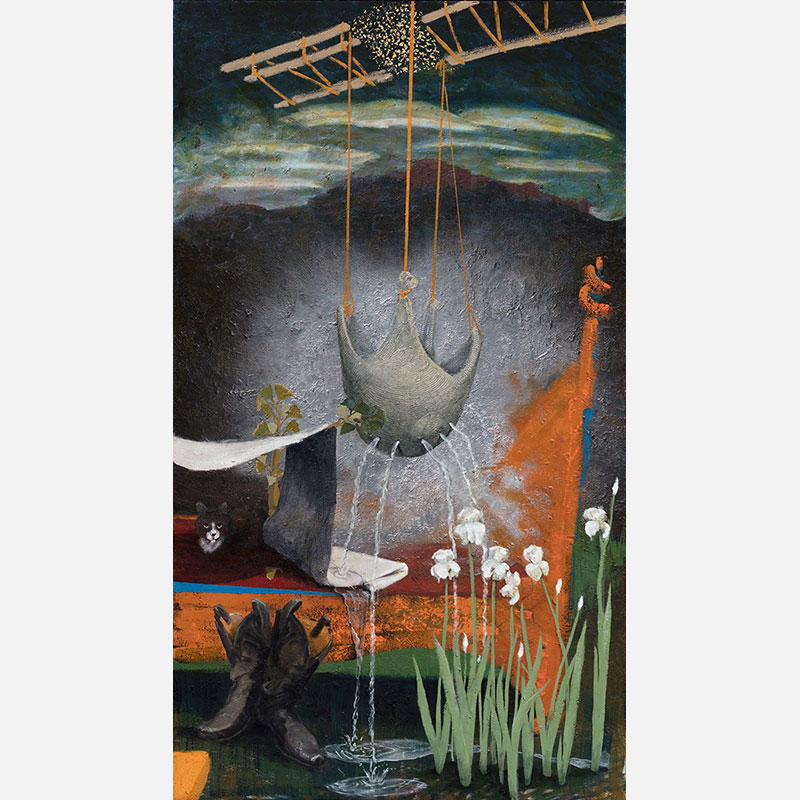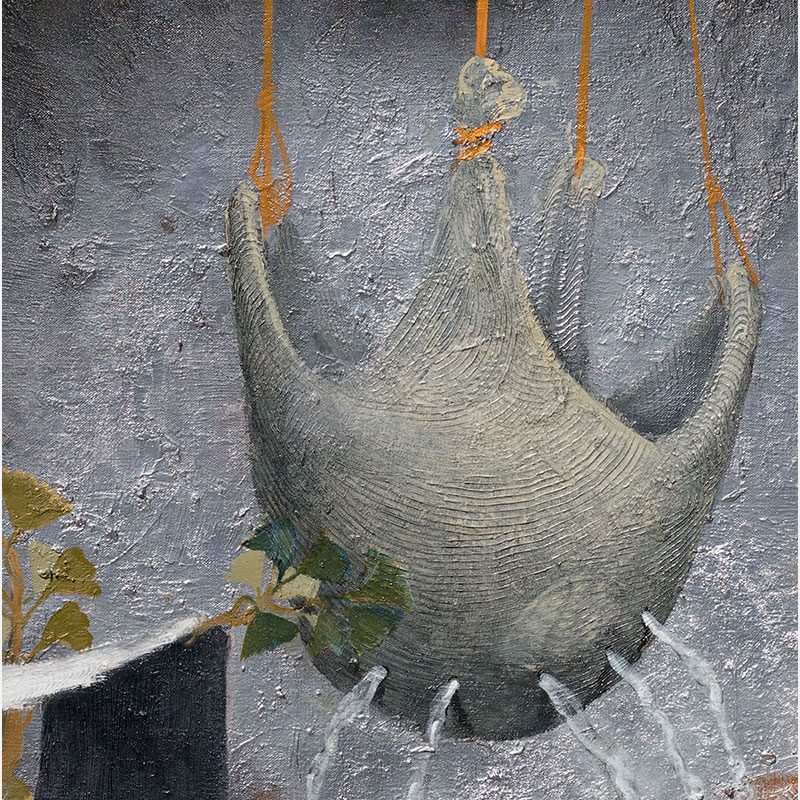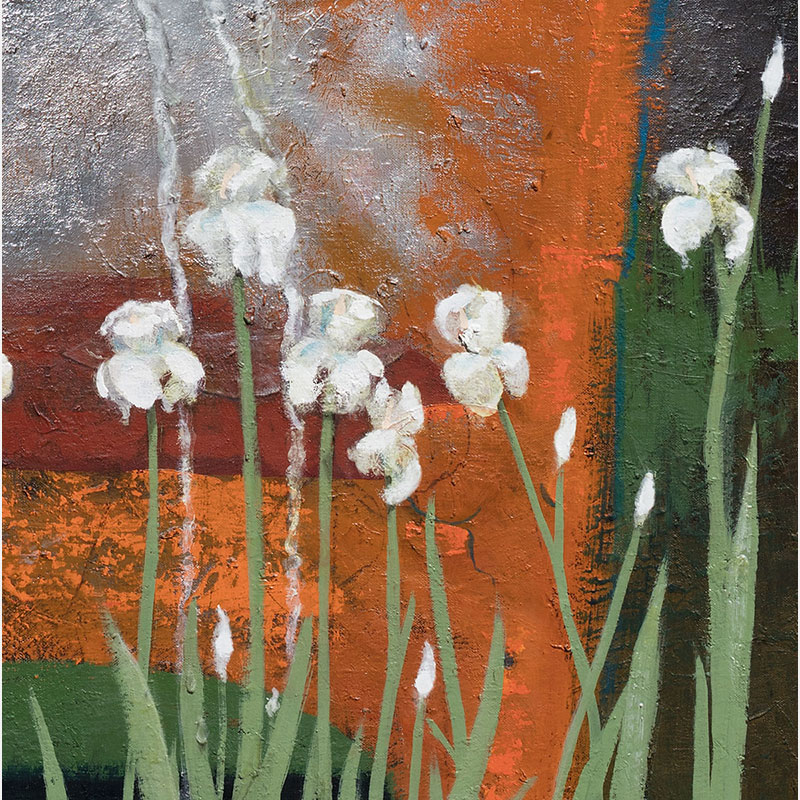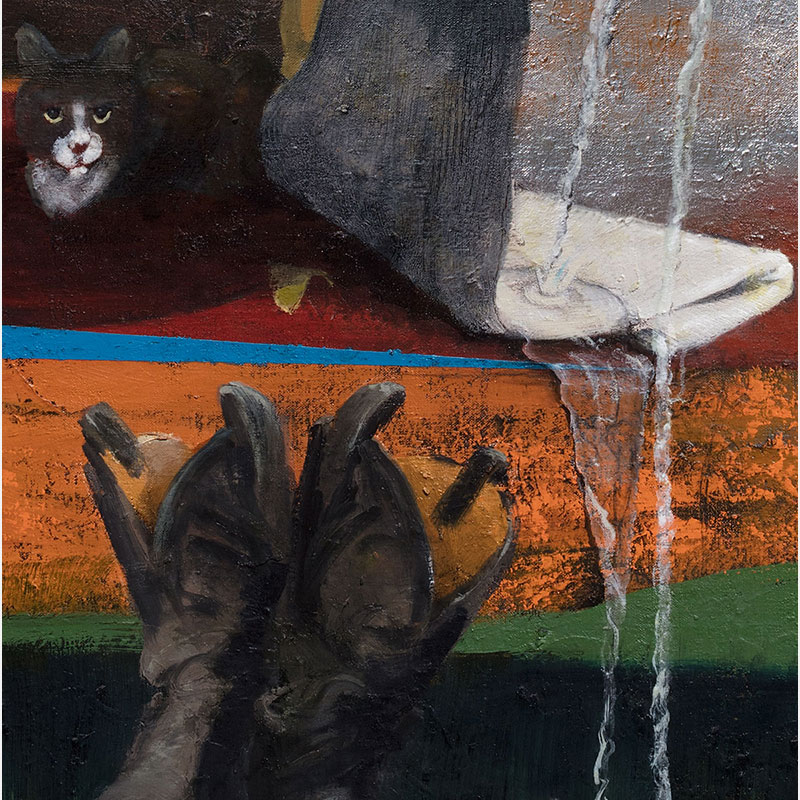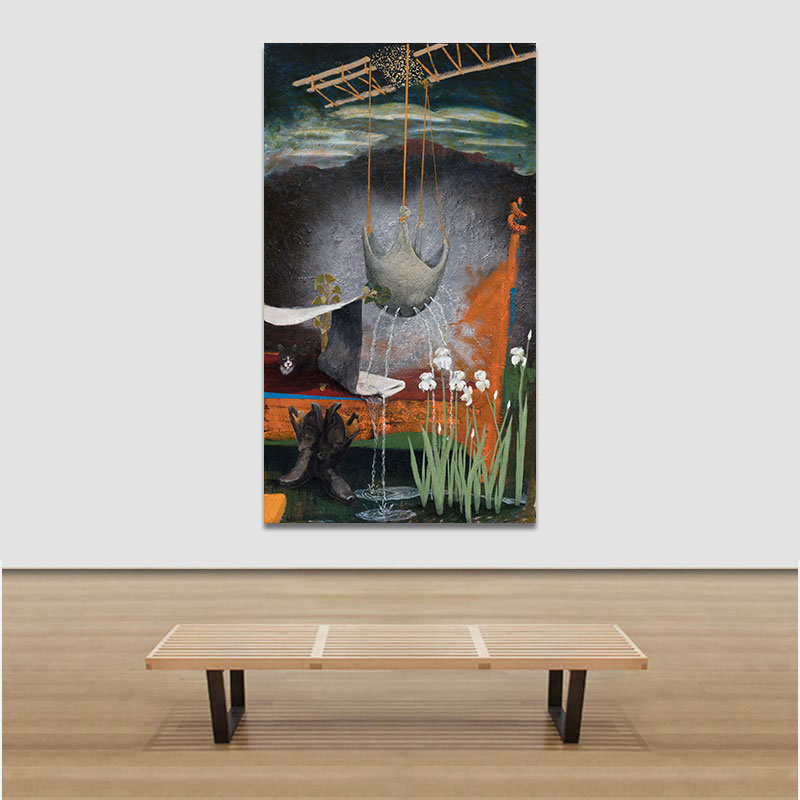In Tired Irises, Gregory Kitterle stages a surreal allegory in the language of Northern Renaissance painting. A crown-like vessel spills water onto white irises, its descent tethered to a skeletal ladder rising into a stormy sky. Below, a pair of worn cowboy boots and the figure of a cat anchor the scene, their placement theatrical yet enigmatic. Light cuts across the surface with dramatic clarity, heightening the tension between everyday objects and otherworldly vision.
The painting recalls the allegorical density of Pieter Bruegel and the Dutch tradition, where ordinary details—boots, animals, plants—carried symbolic resonance beyond their appearance. Kitterle adapts that approach for a contemporary meditation, layering objects with multiple meanings. The irises, traditionally symbols of renewal, appear burdened, echoing the title’s exhaustion. The boots, a singular allegory in his practice, embody what the artist describes as “turning weary world view into a flower of one’s vision” and “to say I’m exhausted,” an attempt to unite verbal and visual metaphor. The cat, a motif that recurs across many of Kitterle’s more figurative works, brings both familiarity and mystery, appearing here as an intimate yet spectral presence.
By combining allegorical imagery with the meticulous light and layered surfaces of Renaissance oil painting tradition, Kitterle creates an artwork suspended between domestic intimacy and mythic grandeur. The scene resists direct interpretation, instead offering a stage where memory, fatigue, and renewal overlap. Like Bruegel’s worlds, Tired Irises invites viewers to read meaning into every object, yet denies certainty, allowing narrative to hover in ambiguity. It becomes less a still life than a vision of endurance—personal and universal—where the weight of time is rendered with both humor and solemnity.
less...
